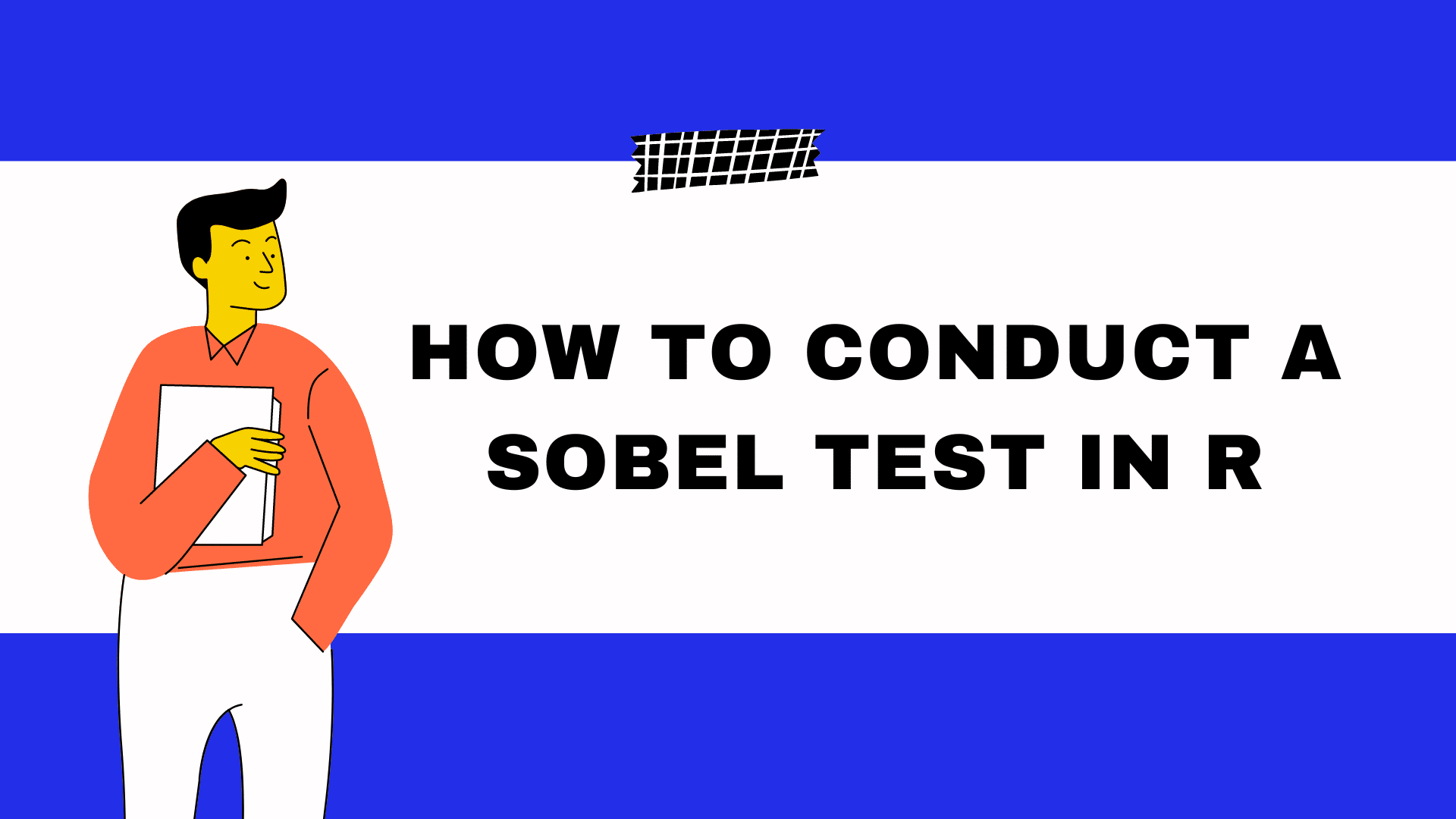The Sobel test is a statistical method used to assess the significance of the indirect effect of an independent variable on a dependent variable through a mediator variable.
Steps to conduct a Sobel test
- Calculate the total effect (c): This is the direct effect of the independent variable (X) on the dependent variable (Y) without considering the mediator.
- Calculate the direct effect (c’): This is the effect of X on Y while controlling for the mediator (M).
- Calculate the indirect effect (ab): This is the effect of X on Y that operates through the mediator M.
- Conduct the Sobel test: Use the formula to compute the z-score and p-value to assess the significance of the indirect effect.
Using R to do the Sobel Test
#install bda package if not already installed
install.packages('bda')
#load bda package
library(bda)
Here’s the basic syntax for performing a Sobel test:
mediation.test(mv,iv,dv)
Here’s what each argument represents:
mv: This is the mediator variable (M) in your mediation model.iv: This is the independent variable (X) in your mediation model.dv: This is the dependent variable (Y) in your mediation model.
Here’s an example of how you can use the mediation.test() function with some sample data:
# Sample data mv <- rnorm(100) # Mediator variable iv <- rmnorm(100) # Independent variable dv <- rnorm(100) # Dependent variable # Perform Sobel test mediation.test(mv, iv, dv)
This code produces the following output:

Interpretation of Results
The z value is -0.8376459 and the corresponding p-value is 0.4022296.
H0: There is no mediation effect
H1: There is mediation effect
We fail to reject the null hypothesis that there is no mediation effect because this p-value is higher than the alpha level of 0.05.
There is therefore no statistically significant mediation effect.
Additional Tips and Considerations for Performing the Sobel Test in R
1. Assumptions and Preprocessing Data:
Before diving into the Sobel test, it’s crucial to ensure that your data meets the necessary assumptions for mediation analysis. Ensure that your data is normally distributed, and check for outliers. If your data violates these assumptions, consider data transformation techniques or non-parametric mediation tests as alternatives. Additionally, confirm that the mediator variable indeed lies on the causal pathway between the independent and dependent variables.
2. Sample Size:
The reliability of mediation analysis, including the Sobel test, depends on having an adequate sample size. Smaller sample sizes can lead to unstable estimates and less statistical power. Ensure you have a sufficient number of observations to obtain reliable results. Researchers often use guidelines like having at least 100 cases or following specific rules of thumb based on your research context.
3. Bootstrapping:
Bootstrapping is a crucial step in the Sobel test as it helps estimate the indirect effect’s confidence intervals. The more bootstrapping samples you generate, the more accurate your confidence intervals will be. Typically, 1,000 or 5,000 bootstrap samples are used, but the choice depends on your specific study and computing resources. Remember, more bootstrapping samples require more computation time.
4. Causality and Temporality:
Mediation analysis, including the Sobel test, assumes causality and temporality. It presumes that the independent variable precedes the mediator, which in turn precedes the dependent variable. Ensure your study design aligns with these assumptions, as violating them can undermine the validity of your mediation analysis.
5. Control Variables:
Consider including relevant control variables in your mediation model. Control variables can help reduce confounding effects and enhance the validity of your results. Choose control variables based on prior research and theory, and be cautious not to over-control, which can lead to biased estimates.
Incorporating these additional tips and considerations into your Sobel test in R will enhance the rigor and reliability of your mediation analysis, ultimately leading to more robust and meaningful research findings.
